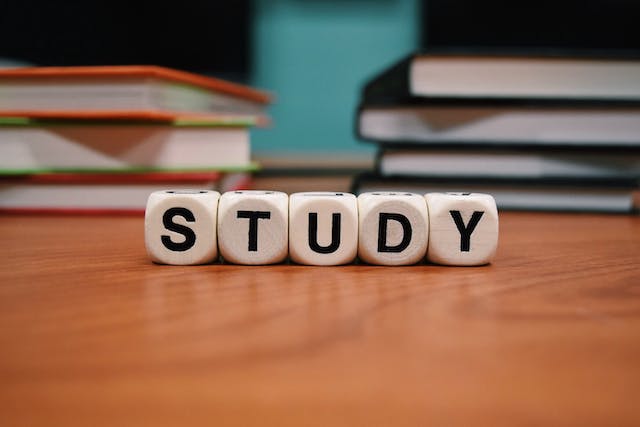Introduction:
In the dynamic landscape of education, fostering a sense of fearlessness within the classroom is paramount. This journey into “Fearless Futures” is not merely about overcoming immediate academic challenges but empowering students for a lifetime of courageous learning. In this article, we will delve into strategies that educators can employ to nurture classroom courage, encouraging students to approach challenges with resilience, express creativity boldly, and embark on a journey of continuous and fearless learning.
Embracing Challenges with Resilience
Redefining Failure as a Stepping Stone
The fear of failure often acts as a barrier to learning. This section focuses on reframing failure as an integral part of the learning process. By normalizing setbacks, educators create an environment where students view challenges not as roadblocks but as stepping stones to success. Practical examples and success stories will illustrate how resilience in the face of failure can lead to newfound courage.
In traditional learning environments, failure is often stigmatized and feared. However, embracing a fearless future requires a shift in perspective. Educators can emphasize that failure is not the end but a crucial part of the journey. By sharing stories of well-known figures who faced setbacks, students can see that failure is a common thread in the fabric of success.
Encouraging a Growth Mindset
At the core of classroom courage lies the concept of a growth mindset. This section explores strategies to instill a growth mindset, emphasizing the belief that abilities canbe developed through dedication and hard work. By encouraging students to embrace challenges as opportunities to learn, educators foster a mindset that fuels courage and resilience in the face of difficulties.
In traditional settings, a fixed mindset often prevails, where students believe their abilities are innate and unchangeable. However, a fearless future requires a paradigm shift towards a growth mindset. Educators can actively praise effort, perseverance, and strategies, highlighting that intelligence is not fixed but can be developed over time through dedication and learning.

Expressing Creativity Boldly
Creating a Safe Space for Self-Expression
Fearlessness in the classroom extends to creative expression. This section delves into the importance of providing a safe and supportive space for students to express their creativity without judgment. By fostering an atmosphere that values diverse perspectives and original ideas, educators can cultivate the courage to think outside the box.
In traditional learning environments, creativity is often limited by strict guidelines and fear of criticism. Fearless futures, however, require an environment where students feel safe to express their ideas. Educators can establish ground rules that encourage constructive feedback and emphasize that every idea has value, creating a safe space for students to unleash their creativity.
Integrating Arts and Innovation into Learning
Arts and innovation play a crucial role in nurturing creativity and courage. This section explores how incorporating artistic elements and innovative approaches into the curriculum can inspire students to explore their creativity boldly. Real-world examples showcase how blending traditional education with creative expression enriches the learning experience.
In traditional settings, the focus is often solely on academic subjects, leaving little room for artistic expression and innovative thinking. Fearless futures, on the other hand, recognize the importance of a well-rounded education. Educators can integrate arts, drama, music, and innovative projects into the curriculum to provide diverse avenues for students to express themselves creatively.
Fostering Inquisitive Minds for Lifelong Learning
Curiosity as the Catalyst for Courage
Curiosity is the key to cultivating a fearless attitude towards learning. This section emphasizes the importance of fostering curiosity in the classroom. Educators can ignite the flame of curiosity by posing thought-provoking questions, encouraging exploration, and promoting a sense of wonder. Students equipped with curiosity develop the courage to seek knowledge beyond the boundaries of traditional learning.
In traditional learning environments, curiosity is often stifled by rigid curricula and standardized testing. However, fearless futures require a curiosity-driven approach to education. Educators can incorporate inquiry-based learning, allowing students to explore topics of interest and encouraging them to ask questions, fostering a lifelong love for learning.
Connecting Classroom Learning to Real-World Impact
To instill fearless curiosity, students need to see the real-world impact of their learning. This section explores strategies to connect classroom concepts to tangible, real-world applications. By showcasing the relevance of education in solving global challenges or making a positive impact, educators empower students to approach learning with a sense of purpose and courage.
Traditional learning environments often fail to highlight the practical applications of classroom knowledge. Fearless futures, however, recognize the importance of understanding how education translates into real-world solutions. Educators can introduce projects that bridge the gap between theoretical learning and practical impact, inspiring students to see the meaningful contribution education can make to the world.
Conclusion:
In conclusion, Fearless Futures in the classroom go beyond conquering immediate academic challenges. It’s about instilling resilience in the face of setbacks, fostering bold creative expression, and nurturing a curiosity that extends beyond the classroom walls. By embracing challenges with resilience, encouraging a growth mindset, creating a safe space for self-expression, integrating arts and innovation, and fostering inquisitive minds for lifelong learning, educators pave the way for students to embark on a journey of continuous and fearless learning.
The classroom becomes a space where courage is not just encouraged but becomes a foundational aspect of students’ futures. As educators implement these strategies, they contribute to a generation equipped with the courage to face unknown challenges, express creativity boldly, and embrace a lifelong journey of fearless learning. Fearless Futures are not just a vision; they are the reality that educators can cultivate within the walls of their classrooms, shaping a generation ready to fearlessly navigate the complexities of the future.








